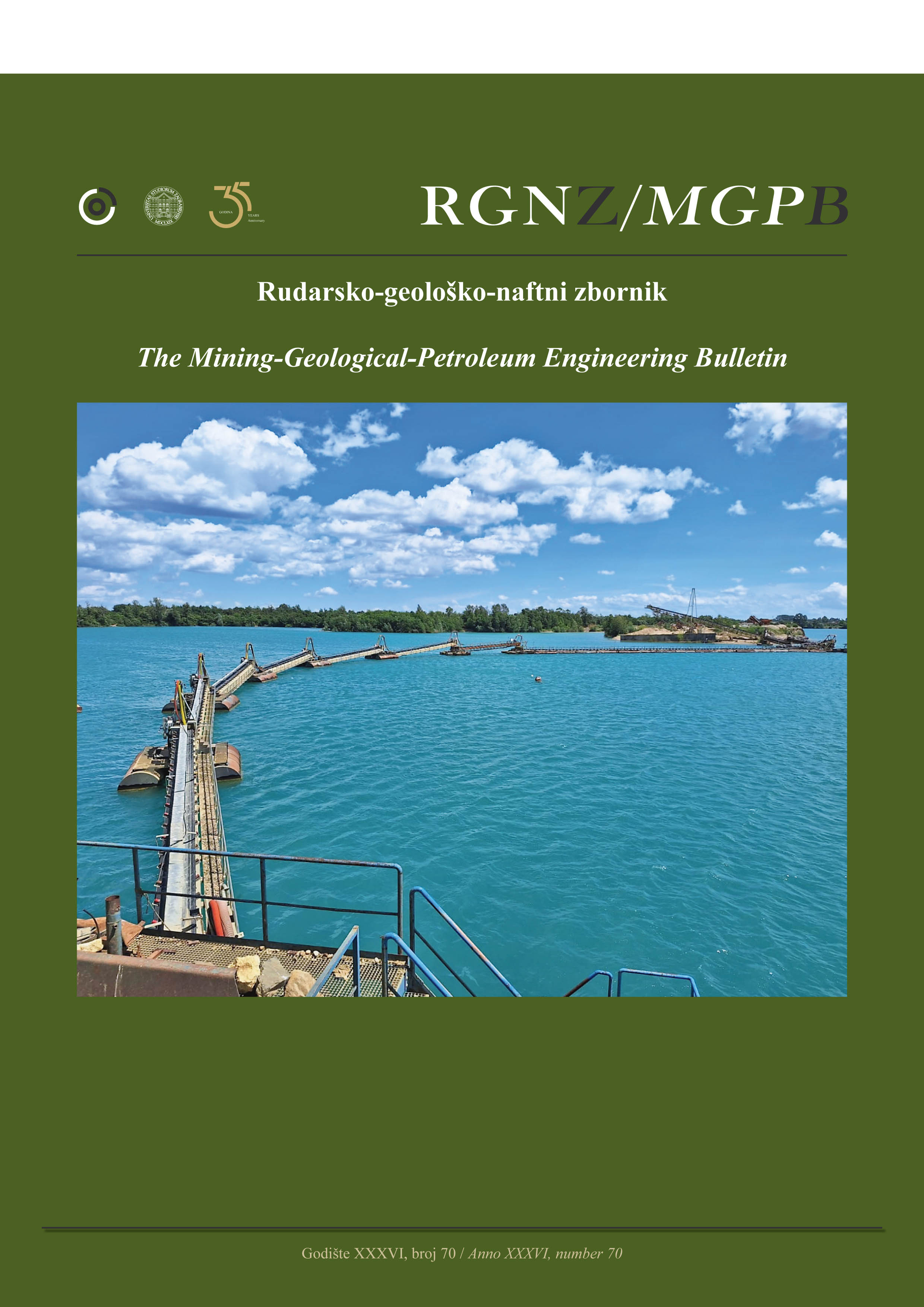Investigating Absorption Effects on Oil Droplets in Enhanced Oil Recovery: A Force Analysis Approach
DOI:
https://doi.org/10.17794/rgn.2024.4.8Keywords:
oil droplet, gravity force, capillary force, corner flow, spinel oxide nanoparticleAbstract
This research aims to analyze the forces that affect oil droplets to illustrate that augmenting the mass of an oil droplet fosters favorable conditions for interaction between displaced and displacing fluids. This, in turn, impedes the bypassing of the displacing fluid around the oil droplets. In this investigation, the concept of augmenting the mass of an oil droplet is realized through absorption phenomena, employing coated spinel oxide (cobalt ferrite oxide) nanoparticles (CFO NPs). The synthesis of CFO NPs was successfully carried out in the laboratory using a sol-gel technique, followed by coating with a surfactant and lauric acid. The coated spinel oxide NPs underwent characterization using IR, XRD, and XRF techniques. The procedures started with the calculation of capillary force restrictions for small and large oil droplets. Furthermore, practical experiments involving oil droplets on glass plates at a 30° angle were conducted for different scenarios: without water injection, with water injection, and during the "absorption effect" of CFO NPs. The findings revealed that a large oil droplet exhibits lower capillary pressure restrictions compared to a small oil droplet, with a disparity of 0.02 m/s2. Consequently, it is comparatively easier for large oil droplets to become free than small ones. Moreover, a large oil droplet exhibits faster movement than small oil droplets due to gravitational effects in the absence of any injections. During the water injection scenario, the water droplets were unable to displace the oil droplet; instead, they passed through the passage beside and above the oil droplet consistently with an increase in the amount of water droplets. However, in the coated CFO NPs scenario, absorption of the coated CFO NPs onto the oil droplet was observed. This resulted in the aggregation of oil molecules, augmenting the gravity of the oil droplet and creating favourable conditions for its displacement. Notably, no water bypass beside the oil droplet was observed in this scenario, unlike the water scenario. Additionally, the aggregation of oil molecules induced corner flow, providing conducive conditions for microemulsion formation, altering wettability, modifying residual oil saturation, and enhancing injection performance. Euler's equation was employed to analyse corner flow, indicating that the level of oil deformation increases with the rising rotation velocity, potentially leading to an increased recovery factor.
Downloads
Published
How to Cite
Issue
Section
License
Copyright (c) 2024 Mohammed A. Samba, Yiqiang Li, Zheyu Liu, Ibrahim A. Amar, Muslim Abdurrahman, Peter O. Anyimah

This work is licensed under a Creative Commons Attribution 4.0 International License.
Creative Commons-BY
Authors who publish with this journal agree to the following terms:
In agreeing this form, you certify that:
- You read the ethical codex of the RGN zbornik available at journal web.
- You submitted work is your original work, and has not previously been published and does not include any form of plagiarism.
- You own copyright in the submitted work, and are therefore permitted to assign the licence to publish to RGN zbornik.
- Your submitted work contains no violation of any existing copyright or other third party right or any material of an obscene, libellous or otherwise unlawful nature.
- You have obtained permission for and acknowledged the source of any illustrations, diagrams or other material included in the work of which you are not the copyright owner.
- You have taken due care to ensure the accuracy of the work, and that, to the best of your knowledge, there are no false statements made within it.
- All co-authors of this submitted work are aware of, and in agreement with, the terms of this licence and that the submitted manuscript has been approved by these authors.
Publication licence
You retain copyright in your submitted work, according to journal license policy (CC-BY). By signing this form you agree that RGN zbornik may publish it under the publication licence. In summary the licence allows the following:
Anyone is free:
- To copy, distribute, display, and perform the work.
- To make derivative works.
Under the following conditions:
- The original author must always be given credit.
- The work may not be used for commercial purposes.
- If the work is altered, transformed, or built upon, the resulting work may only be distributed under a licence identical to this one.
Exceptions to the licence
In addition to publishing the work printed under the above licence, RGN zbornik will also enable the work to be visible online.
The journal editorial can change the licence rules anytime but it cannot retroactively restrict author(s) rights.


